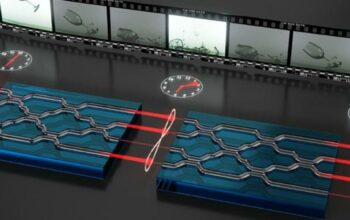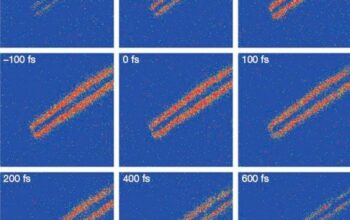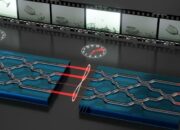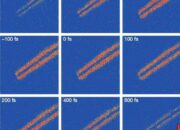The advent of nanotechnology and photonics has paved the way for unprecedented innovations in information processing, communication, and sensing. Among these developments, the manipulation of light—particularly the twisting of light—on a microchip represents a groundbreaking advancement with far-reaching implications. As we embark on a journey through the realm of photonics, we will explore the intricate phenomenon of twisting light, the technological innovations that facilitate this manipulation, and the promising prospects that emerge from this newfound capability.
First, it is essential to understand the fundamental principles of light and its behavior. Photons, the elementary particles of light, exhibit both wave-like and particle-like properties. This duality renders them exceptionally versatile for various applications. The concept of twisting light, often referred to as orbital angular momentum (OAM), entails imparting a helical phase structure to photon beams. Rather than propagating in straight paths, twisted photons can spiral around a central axis, allowing for novel modes of information transmission.
Recent advances have demonstrated that chips can manipulate light effectively. This manipulation takes place at the nanoscale, where optical devices with unprecedented precision can be fabricated. These photonic chips integrate various components, such as waveguides, modulators, and detectors, allowing for intricate control over light’s trajectory and polarization. The interplay of these components is critical in realizing the full potential of twisted light on a chip.
By constructing photonic circuits with helical pathways, researchers have successfully demonstrated the ability to harvest the unique properties of twisted photons. The design of such circuits employs advanced materials, which are often designed at the atomic level to achieve specific optical characteristics. Metamaterials—engineered materials designed to manipulate electromagnetic waves in unusual ways—exemplify this approach. They grant the capability to bend and twist light in unprecedented fashions that were once thought impossible.
One of the most promising applications of twisted light lies in the field of telecommunications. The capacity of twisted photons to carry multiple channels of information simultaneously offers a significant enhancement over traditional methods of data transmission. Utilizing OAM, practitioners can vastly increase the bandwidth of optical fibers, enabling faster data rates and reducing congestion within telecommunications networks. This advancement not only holds the potential to ameliorate internet infrastructure but also to streamline data-intensive applications such as cloud computing and 5G networks.
Moreover, the manipulation of light on a chip extends beyond communication. In the realm of quantum computing, twisted photons serve as carriers of qubits, the fundamental units of quantum information. The unique characteristics of twisted light enable the superposition and entanglement of qubits, paramount for executing complex quantum algorithms efficiently. By leveraging twisted photons, researchers can enhance quantum computational capabilities, purporting a future where quantum computers can solve problems that classical counterparts could only dream of tackling.
The versatility of twisted light also encompasses detection and imaging applications. In biomedical fields, for instance, twisted photons could improve the resolution and sensitivity of imaging techniques such as optical coherence tomography. The spinning motion of twisted light enhances the contrast and detail in the images, potentially leading to earlier diagnosis and improved treatment of diseases. Furthermore, sensing applications benefit from the enhanced sensitivity that twists impart, allowing for precision measurement of physical properties such as stress and strain in materials.
Despite the myriad opportunities presented by twisting light on a chip, several challenges remain. The integration of twisted light into existing optical systems requires overcoming issues related to stability, alignment, and scalability. Developing robust methods to manipulate and detect twisted photons efficiently is essential to transition from theoretical concepts to practical applications. Continued research in this field aims to address these challenges while enhancing the performance and reliability of photonic chips.
Additionally, the emergence of artificial intelligence and machine learning offers a novel avenue for enhancing the manipulation of light. By employing advanced algorithms, researchers can elucidate complex patterns and behaviors associated with twisted light, accelerating the discovery of new applications and optimizing existing systems. The synergetic combination of AI and photonic technology may catalyze innovations that fundamentally alter our approach to light manipulation and utilization.
In conclusion, the exploration of twisting light on a chip unveils a captivating trajectory that encapsulates both fundamental physics and cutting-edge technology. The unique properties of twisted photons afford extraordinary opportunities across diverse domains, from telecommunications and quantum computing to medical imaging and sensing. While challenges persist, the relentless pursuit of innovation promises to unlock a new realm of possibilities, reshaping our understanding of photonics and heralding a future where the manipulation of light is as commonplace as the light itself.
As we step into this uncharted territory, the proverbial torchbearer of knowledge illuminates the path ahead, piquing curiosity and fostering a paradigm shift in the perspective of light manipulation. The journey of a photon, with its newfound spin, is just beginning.










